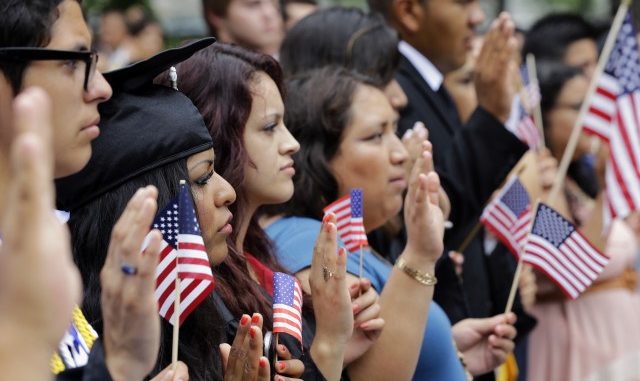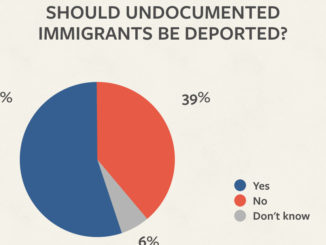
A new study finds they commit less crime and they learn English.
WSJ, Editorial Board
Sorry to break the good news to some of our conservative friends, but it turns out that most immigrants to America are assimilating as their forebears did. That’s the gist of a new 400-page report from the National Academies of Sciences, Engineering and Medicine, which looks at everything from English proficiency, education levels and family structure to health, crime and employment.
Here’s the money sentence: “Across all measurable outcomes, integration increases over time, with immigrants becoming more like the native-born with more time in the country, and with the second and third generations becoming more like other native-born Americans than their parents were.”
Across all measurable outcomes. That bears repeating, especially when so many are painting immigrants who come here to work as criminals or welfare mooches. To take one example, the Donald Trump brain trust at the Center for Immigration Studies recently found “significantly higher welfare use associated with immigrants.”
But even CIS admits they didn’t measure individuals. To get to the headline-grabbing result, CIS had to measure households. Given that immigrant households are typically larger than those of native-born Americans, simple arithmetic means that the more people you have in a home, the more likely one of these people will receive some sort of government benefit.
This kind of political spin makes the National Academies report so welcome. Their scope was large. The panel notes that if you add up immigrants here legally and illegally, and then throw in the children of both groups, it works out to about 78.1 million people. That’s one of four members of the U.S. population, so it’s important to know how well they are integrating.
The report finds that roughly 85% of America’s foreign-born population speak a language other than English at home. For most of these, that language is Spanish. But that’s not the whole story. English-language proficiency, it says, may be happening even “faster now” than it did for earlier waves of mainly European immigrants. Today many people arriving already speak English, and second and third generations grow in proficiency.
Even in the large concentration of Mexican Americans in Southern California, by the third generation English has become their main spoken language. Only 4% of this third generation report speaking primarily Spanish at home.
The report also finds that the “increased prevalence of immigrants is associated with lower crime rates—the opposite of what many Americans fear.” The incarceration rate for the foreign born is only a fourth of that of the native born.
As for working, the report notes that “the least educated immigrants” are “more likely to be employed than comparably educated native-born men, indicating that they are filling an important niche in our economy.” In other words, “immigrants appear to be taking low-skilled jobs that natives are either not available or unwilling to take.”
The report does lay out some challenges. Black immigrants are integrating at the slowest rate. And notwithstanding all the hollering over “anchor babies,” the report frets that the naturalization rate among U.S. immigrants is relatively low at 50%: The U.S. rate remains “well below many European countries and far lower than other traditional receiving countries such as Australia and Canada.”
This suggests that millions who come to America to live or work don’t want to be citizens. They are coming because this is where the jobs are. This is further evidence that a guest-worker program—which would allow workers to come and go legally—would solve much of the problem of people sneaking in to get a job then staying here illegally because they fear they won’t be able to get back in.
The flip side is that we should reform the system for those who do want to become citizens so that we attract immigrants based more on the skills and talent than family connections as under current law.
Immigration opponents portray the U.S. as being overrun by hordes who will turn us into Mexico. The Academies study reassures that most newcomers are doing what they’ve always done: becoming Americans.



